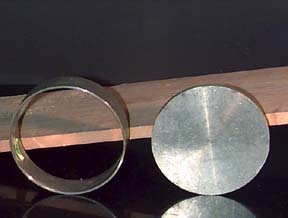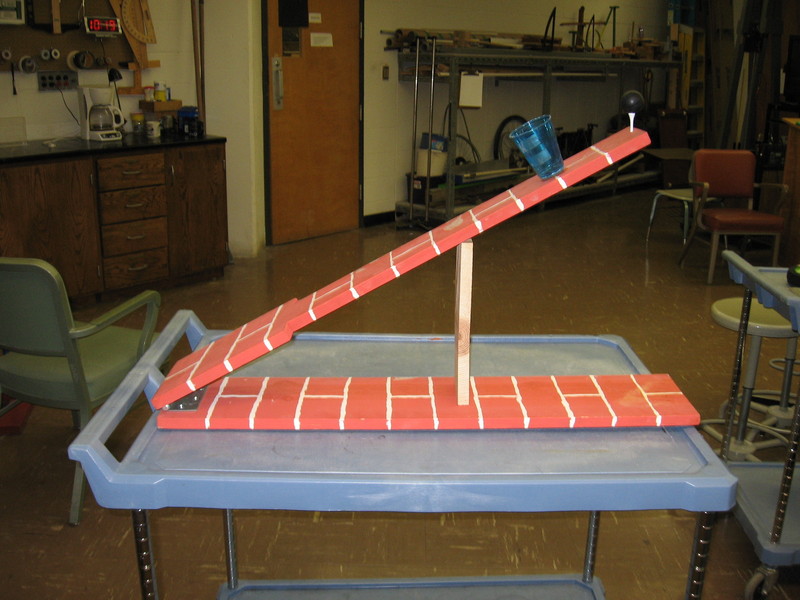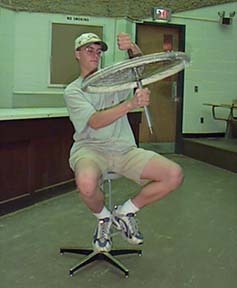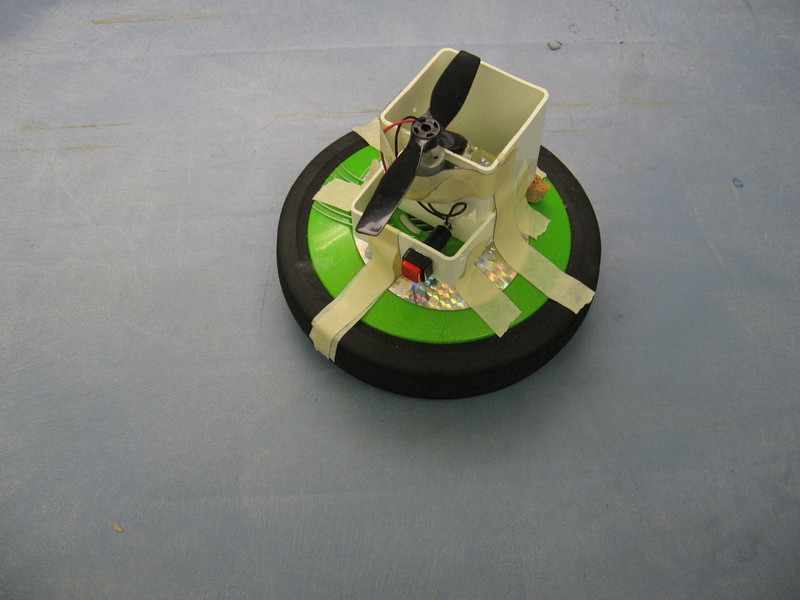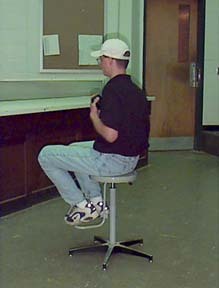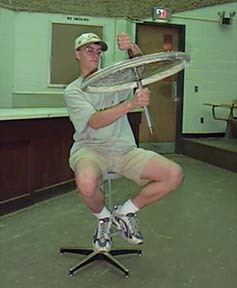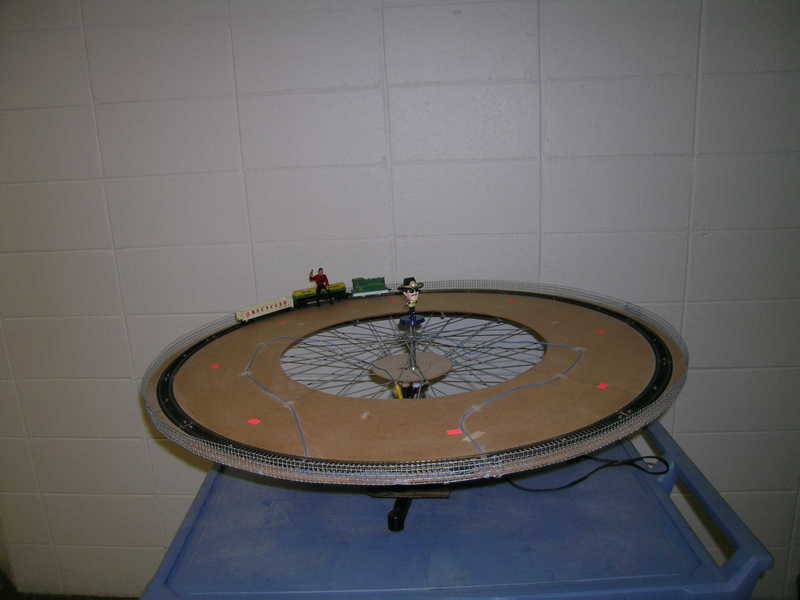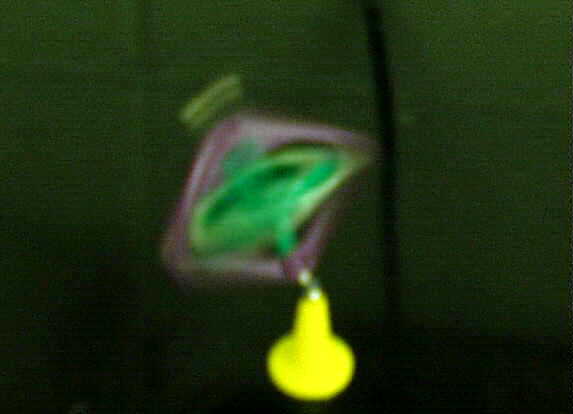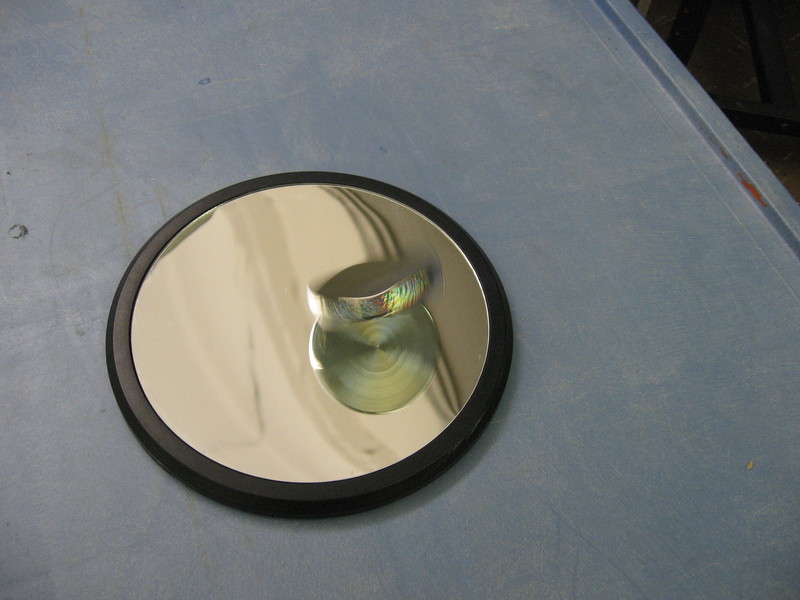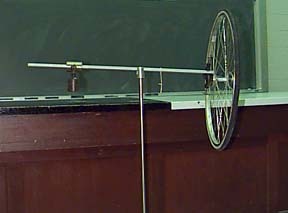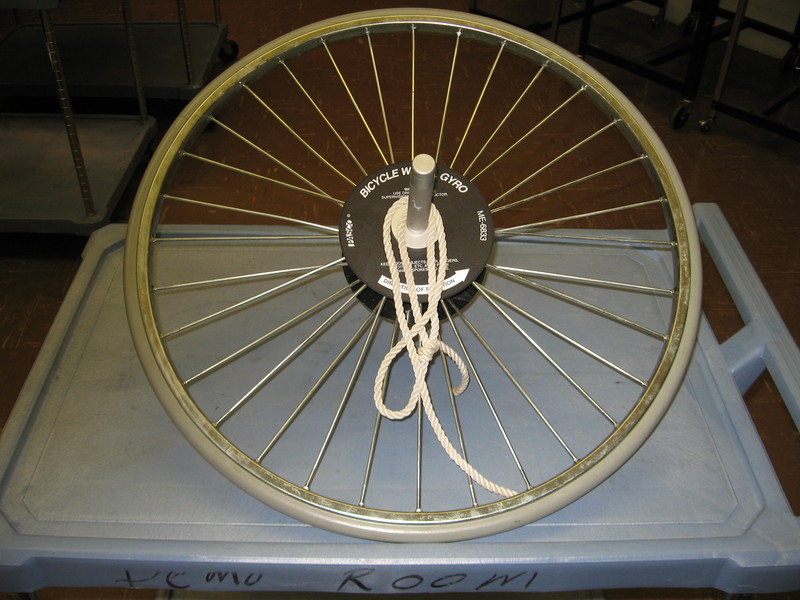ROTATIONAL DYNAMICS
1Q10.30 RING AND DISK1Q20.1O ROTATIONAL KINETIC ENERGY
1Q20.50 HINGED BOARD DEVICE
1Q30.10 PASSING THE WHEEL
1Q40.05 HELICOPTER MODEL
1Q40.10 ROTATING STOOL AND WEIGHTS
1Q40.30 ROTATING STOOL AND BICYCLE WHEEL
1Q40.40 ROTATING TRAIN ON TURNTABLE
1Q50.10 PRECESSING GYROSCOPE
1Q50.15 EULER'S DISK
1Q50.20 BICYCLE WHEEL GYRO
1Q50.21 BICYCLE WHEEL ON ROPE
|
1Q10.30 Ring and Disk A ring and disk of the same diameter are rolled down an incline. The speeds will different due to the different moments of inertia which affects how much of the energy is in form of rotational KE vs translational KE. Instead of ring and disk try two kinds of soup (watery vs solid vs empty can).
Setup Requirements: Minimal. For soup cans the analysis is more complicated. Some liquids (motor oil) will stick to side of can and rotate. Water will not stick to side and will not rotate. (Liquid soup beats solid soup, solid soup beats empty can). So what happens if you use noodle soup (non sticky water + sticky noodles)?
Equations: PE(gravity) > KE(translational) + KE(rotational)
Safety Issues: Prevent ring and disk from rolling off table. |
|
1Q20.10 Rotational Kinetic Energy Potential energy is converted into linear and rotational kinetic energy. Falling mass, torque and moment of inertia are adjustable. Setup Requirements: Assembled as needed.
Equations: Gravitational P.E = Linear K.E. + Rotational K.E.
Safety Issues: Falling weight. |
|
1Q20.50 Hinged Stick Device A device is available to demonstrate the standard textbook problem that shows that part of a falling object can have an acceleration > g. This version is called the hinged stick device. It is related to falling chimney that breaks problem. Setup Requirements: minimal
Equations: The end of the board has a > g so the cup can get under the falling ball.
Safety Issues: Loud noise when tilted part hits bottom board. |
|
1Q30.10 Passing the Wheel Pass a bicycle wheel back and forth to a person on a rotating stool. The person sitting on stool " acquires" angular momentum.
Setup Requirements: Off the shelf
Equations: Conservation of Angular Momentum
Safety Issues: Watch spokes. Possible dizziness. |
|
1Q40.05 Helicopter Model This demonstration simulates what happens when a helicoper takes off. A fan starts turning. The device has acquired angular momentum using an internal power supply. To compensate the entire device starts spinning in opposite direction. If you tilt the fan you can show how a helicopter moves foward also. Setup Requirements: Batteries need to be recharged or replaced. Ask for at least one day in advance.
Equations: Conservation of angular momentum.
Safety Issues: Being cut by fan blade.
|
|
1Q40.10 Rotation of Stool and Weights Spin on a rotating stool with a weight in each hand. Move arms in and out to see how speed changes. The rotation rate changes as the moment of inertia changes. Compare to what happens to ice skaters when move arms in and out.
Setup Requirements: Off the shelf. Choice of 3, 5 or 8 lb wts. Equations: Angular momentum is conserved. As r decreases spin rate increases. L = I x spin rate. I proportional to r2. Safety Issues: Possible Dizziness. Sit on the center of the stool. Avoid dropping weights on foot. |
|
1Q40.30 Rotating Stool and Bicycle Wheel Invert a spinning bike wheel while sitting on a rotating stool.
Setup Requirements: Off the shelf.
Equations: Conservation of angular momentum
Safety Issues: Watch spokes, dizziness |
|
1Q40.40 Rotating Train on Turntable Use train on turntable to illustrate conservation of angular momentum. Train goes one way, turntable rotates in opposite direction. Bring up to speed slowly. Similar to helicopter demonstration.
Setup Requirements: Advance notice needed to put device on blue cart and put cars on track to take into class. Train cars are kept on shelf. Test out in Demo Room before using in class.
Equations: Conservation of angular momentum
Safety Issues: AC voltage present. |
|
1Q50.10 Precessing Gyroscope Demonstrate precession using gyroscope.
Setup Requirements: Off the shelf. Several types available.
Equations: Precession rate inversely proportional to spin rate
Safety Issues: none |
|
1Q50.15 Euler's Disk Before the Enerigizer Bunny there was Euler's disk. It is surprising how long it will spin. Demonstrate precession by spinning disc on concave plate. The disk slowly falls over. It thus also demonstrates conversion of gravitational potential energy to rotational kinetic enegy. The frequency of the sound you hear increases just before disk comes to halt. Physicists are still debating the relative importance of air resistance and friction in making it finally stop spinning. Setup Requirements: Off the shelf.
Equations: Conservation of mechanical energy. Conservation of angular momentum.
Safety Issues: Avoid dropping heavy disk on mirror plate. |
|
1Q50.20 Bicycle Wheel Gyro Spin a bicycle wheel mounted on a long axle with adjustable counterbalance. Direction of rotation depends on location of adjustable weight. Common textbook example of precession.
Setup Requirements: Minimal. Pliers may be needed to loosed screw holding weight. Speed and direction of precession can be changed by adjusting position of weight on rod.
Equations: Precession rate inveresely proportional to spin rate.
Safety Issues: Spinning wheel spokes. |
|
1Q50.21 Bicycle Wheel On Rope Another way of demonstrating precession is to suspend a spinning wheel using a rope attached to one end of a rod passing through center of wheel. Setup Requirements: Minimal. Practice before doing in class.
Equations: Precession rate inversely proportional to spin rate
Safety Issues: Dropping bicycle wheel on foot |

